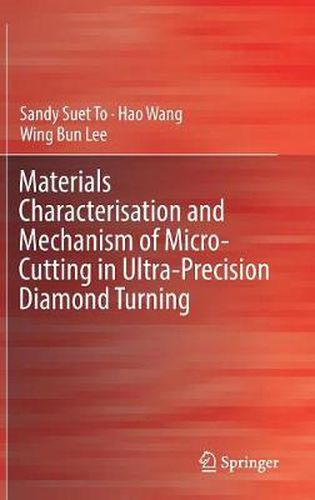Readings Newsletter
Become a Readings Member to make your shopping experience even easier.
Sign in or sign up for free!
You’re not far away from qualifying for FREE standard shipping within Australia
You’ve qualified for FREE standard shipping within Australia
The cart is loading…






This title is printed to order. This book may have been self-published. If so, we cannot guarantee the quality of the content. In the main most books will have gone through the editing process however some may not. We therefore suggest that you be aware of this before ordering this book. If in doubt check either the author or publisher’s details as we are unable to accept any returns unless they are faulty. Please contact us if you have any questions.
This book presents an in-depth study and elucidation on the mechanisms of the micro-cutting process, with particular emphasis and a novel viewpoint on materials characterization and its influences on ultra-precision machining. Ultra-precision single point diamond turning is a key technology in the manufacture of mechanical, optical and opto-electronics components with a surface roughness of a few nanometers and form accuracy in the sub-micrometric range.
In the context of subtractive manufacturing, ultra-precision diamond turning is based on the pillars of materials science, machine tools, modeling and simulation technologies, etc., making the study of such machining processes intrinsically interdisciplinary. However, in contrast to the substantial advances that have been achieved in machine design, laser metrology and control systems, relatively little research has been conducted on the material behavior and its effects on surface finish, such as the material anisotropy of crystalline materials. The feature of the significantly reduced depth of cut on the order of a few micrometers or less, which is much smaller than the average grain size of work-piece materials, unavoidably means that conventional metal cutting theories can only be of limited value in the investigation of the mechanisms at work in micro-cutting processes in ultra-precision diamond turning.
$9.00 standard shipping within Australia
FREE standard shipping within Australia for orders over $100.00
Express & International shipping calculated at checkout
This title is printed to order. This book may have been self-published. If so, we cannot guarantee the quality of the content. In the main most books will have gone through the editing process however some may not. We therefore suggest that you be aware of this before ordering this book. If in doubt check either the author or publisher’s details as we are unable to accept any returns unless they are faulty. Please contact us if you have any questions.
This book presents an in-depth study and elucidation on the mechanisms of the micro-cutting process, with particular emphasis and a novel viewpoint on materials characterization and its influences on ultra-precision machining. Ultra-precision single point diamond turning is a key technology in the manufacture of mechanical, optical and opto-electronics components with a surface roughness of a few nanometers and form accuracy in the sub-micrometric range.
In the context of subtractive manufacturing, ultra-precision diamond turning is based on the pillars of materials science, machine tools, modeling and simulation technologies, etc., making the study of such machining processes intrinsically interdisciplinary. However, in contrast to the substantial advances that have been achieved in machine design, laser metrology and control systems, relatively little research has been conducted on the material behavior and its effects on surface finish, such as the material anisotropy of crystalline materials. The feature of the significantly reduced depth of cut on the order of a few micrometers or less, which is much smaller than the average grain size of work-piece materials, unavoidably means that conventional metal cutting theories can only be of limited value in the investigation of the mechanisms at work in micro-cutting processes in ultra-precision diamond turning.